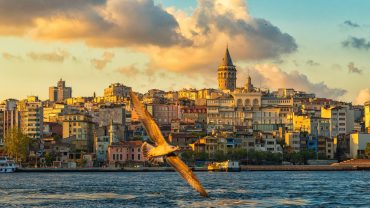Amasya (Greek: Ἀμάσεια) is a city in northern Turkey and is the capital of Amasya Province, in the Black Sea Region. Tokat from east, Tokat and Yozgat from south, Çorum from west, Samsun from north.
The city of Amasya (Turkish pronunciation: [aˈmasja]), the Amaseia or Amasia of antiquity, stands in the mountains above the Black Sea coast, set apart from the rest of Anatolia in a narrow valley along the banks of the Yeşilırmak River. Although near the Black Sea, this area is high above the coast and has an inland climate, well-suited to growing apples, for which Amasya province, one of the provinces in north-central Anatolia Turkey, is famed. It was the home of the geographer Strabo and the birthplace of the 15th century scholar and physician Amirdovlat Amasiatsi. Located in a narrow cleft of the Yeşilırmak (Iris) river, it has a history of 7,500 years which has left many traces still evident today.
In antiquity, Amaseia was a fortified city high on the cliffs above the river. It has a long history as a wealthy provincial capital, producing kings and princes, artists, scientists, poets and thinkers, from the kings of Pontus, through Strabo the geographer, to many generations of the Ottoman imperial dynasty. With its Ottoman-period wooden houses and the tombs of the Pontus kings carved into the cliffs overhead, Amasya is attractive to visitors. In recent years, there has been much investment in tourism, and therefore more foreign and Turkish tourists have visited the city.
During the early Ottoman rule, it was customary for young Ottoman princes to be sent to Amasya to govern and gain experience. Amasya was also the birthplace of the Ottoman sultans Murad I and Selim I. It is thus of great importance in terms of Ottoman history. Traditional Ottoman houses near the Yeşilırmak and the other main historical buildings have been restored; these traditional Yalıboyu houses are now used as cafes, restaurants, pubs and hotels. Behind the Ottoman wooden houses one can see the rock tombs of the Pontic kings.
Etymology
According to Strabo the Greek name Ἀμάσεια comes from Amasis, the queen of the Amazons, who were said to have lived here. The name has changed little throughout history: Ἀμάσεια, Amaseia, Amassia and Amasia are all found on ancient Greek and Roman coinage and continue to be used in modern Greek. Modern Turkish Amasya all represent the same pronunciation.
History
Antiquity
Archaeological research shows that Amasya was first settled by the Hittites and subsequently by Phrygians, Cimmerians, Lydians, Greeks, Persians, and Armenians.
Hellenistic period
An independent Pontic kingdom with its capital at Amaseia was established by the Persian Mithridatic dynasty at the end of the 4th century BC, in the wake of Alexander’s conquests. In the 1st century BC, it briefly contested Rome’s hegemony in Anatolia. By 183 BC, the city was settled by Hellenistic people, eventually becoming the capital of the kings of Pontus from 333 BC to 26 BC. Today, there are prominent ruins including the royal tombs of Pontus in the rocks above the riverbank in the centre of the city. Ancient district in northeastern Anatolia adjoining the Black Sea.
Roman-Byzantine period
Amaseia was captured by a force led by Roman Lucullus in 70 BC from Armenia and was quickly made a free city and administrative center of his new province of Bithynia and Pontus by Pompey. By this time, Amaseia was a thriving city, the home of thinkers, writers and poets, and one of them, Strabo, left a full description of Amaseia as it was between 60 BC and 19 AD. Around 2 or 3 BC, it was incorporated into the Roman province of Galatia, in the district of Pontus Galaticus. Around the year 112, the emperor Trajan designated it a part of the province of Cappadocia. Later in the 2nd century it gained the titles ‘metropolis’ and ‘first city’. After the division of the Roman Empire by emperor Diocletian the city became part of the East Roman Empire (the Byzantine Empire). At this time it had a predominantly Greek-speaking population.
Amaseia was also referenced in the first book of the Alexiad. Amaseia was the town where Emperor Alexios I Komnenos received the foreign general Ursel as a captive from the Turkic general Tutach. Ursel had, according to the book, looted and pillaged the Eastern provinces of the Byzantine Empire until the at-the-time General Alexios convinced Tutach to capture him. Alexios agreed that he would pay “…such a sum of money as no one ever gained before.” to Tutach for the capture of Ursel, however Alexios had no cash to give and the Emperor was unable to fund it, so he attempted to raise money from the people of Amaseia, however this caused serious unrest. However, after a speech by Alexios, he arranged a mock-blinding of Ursel which promptly caused the people to contribute funds. However, this is likely to be biased.
Saints Theodore of Amasea (died by 319), a warrior saint, and the local bishop Asterius of Amasea (died c. 410), some of whose polished sermons survive, are notable Christian figures from the period.
In 2013, a 24-square-meter christian mosaic belonging to the floor of a chapel was discovered, near a site where an illegal archaeological dig had been attempted. The mosaic, depicts apples, an apple tree, partridges and many geometric figures.
Early Turkish rulers
In 1075, ending 700 years of Byzantine rule, Amasya was conquered by the Turkmen Danishmend emirs. It served as their capital until the annexation of the Danishmendid dominions by the Seljuk ruler Kilij Arslan II. When he died, his realm was divided among his sons, and Amasya passed to Nizam ad-Din Arghun Shah. His rule was brief, as he lost it to his brother Rukn ad-Din Suleiman Shah, who subsequently became Sultan. During the 13th century the city passed under the control of the Mongol Ilkhanate, and was ruled by Mongol governors, except for a brief rule by Taj ad-Din Altintash, son of the last Seljuk sultan, Mesud II.
Under the Seljuks and the Ilkhan, the city became a centre of Islamic culture and produced some notable individuals such as Yaqut al-Musta’simi (1221-1298) calligrapher and secretary of the last Abbasid caliph who was a Greek native of Amasya. Schools, mosques, tombs and other architecture of this period still remain.
In 1341, the emir Habiloghlu occupied the city, before it came under the rule of the Eretnid emirate. Hadji Shadgeldi Pasha took Amasya from the Eretnids under Ali Bey, and successfully fended off the claims of Kadi Burhan al-Din, who had supplanted the Eretnids. Shadgeldi was succeeded by his son Ahmed, who managed to retain his autonomy for a while, with Ottoman assistance; but in 1391/92, the mounting pressure forced him to cede the city to the Ottoman sultan Bayezid I, who installed his son, the future Mehmed I, as its governor.
The legend of Ferhat and Shirin
In its Turkish version, this classic tale of oriental folklore is held to have taken place in Amasya. The nearby mountain Ferhat is named for Farhad (Turkish spelling Ferhat), the hero of the legend, who for love of the princess Shirin (Turkish spelling Şirin) tried to win her father’s favour and permission by tunnelling through the mountain to bring spring water to his palace. Sadly, while he was working he was sent the false information that Shirin had died; upon which he threw himself onto the rocks in his grief. And his beloved princess died soon after. The story has since become a play by Nâzım Hikmet, a novel by Talip Apaydın, and an opera by Arif Melikov.
Amasya today
The province of Amasya is known for producing high-quality, small, well-flavoured apples. The Amasya-Tokat region the main area of production. The city is not so developed industrial terms, but is attractive and well-preserved, especially when sitting by the river, which has a particular mystique on a winter evening when fog fills the valley. Tourists (and soldiers from the local base) contribute valuable income to the shopkeepers. The railway line from Sivas to Samsun runs through Amasya, and there is an attractive Ottoman-era railway station.
The city of Amasya has some nightlife, mainly bars and cafes for visitors, and some basic restaurants. It is not a very conservative city, unlike other central and eastern Anatolian cities. Social life in this city, partly owing to tourism, becomes more animated especially during the summer period. Many international circus groups visit this city. June 12 is a festival date for Amasya during this time, with many cultural and sporting activities on offer.
The local cuisine includes the local specialty toyga çorbası, a soup containing yogurt, drunk hot or cold. Other specialties include pastries with poppy seeds and tea, served by the riverbank.
There is an airport in the district, open for civilian flights since 2008. Previously, it was used only for military purposes. There are daily one-hour flights from/to Istanbul.





Comment (0)